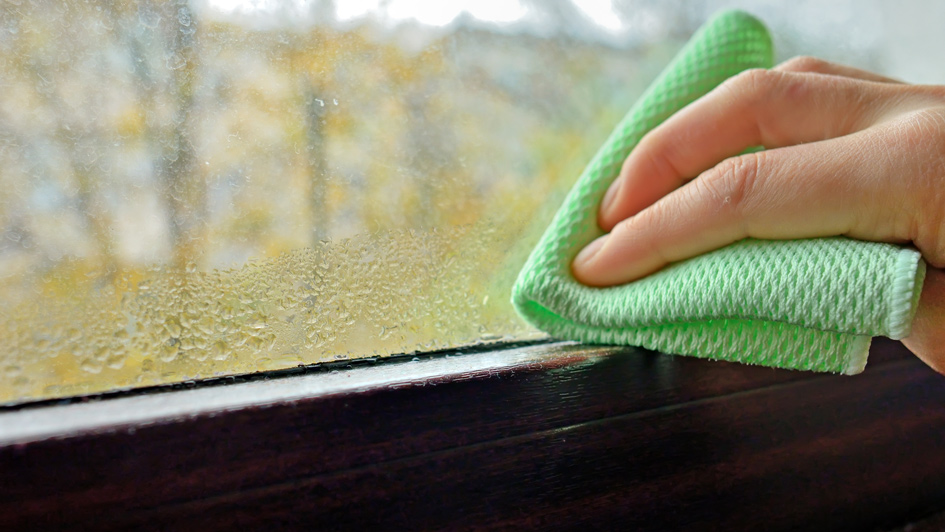
The windows in your home are a gateway to the outdoors, a way to allow light in as you enjoy the view of your garden, yard or scenery. The last thing you need to see is a sweaty window plastered in a coating of condensation.
Not only are windows plastered with condensation unappealing, they also can be a symptom of a more substantial air-quality issue in your home. Fortunately, there’s numerous things you can try to resolve the problem.
What Causes Condensation on Windows
Condensation on the inner layer of windows is formed by the moist warm air throughout your home hitting the cold surface of the windows. It’s particularly prevalent around the winter when it’s much chillier outside than it is in your home.
Inside Moisture vs. In Between Panes
When talking about condensation, it’s necessary to understand the difference between moisture on the inside of your windows compared to moisture in between the windowpanes. One is an air-quality issue and the other is a window issue.
- Moisture within a window is created from the warm moist air throughout your home collecting on the glass.
- The moisture you see between windowpanes is caused when the window seal stops working and moisture slips between the two panes of glass, and at that point the window needs to be repaired or replaced.
- Condensation inside the windows isn’t a window problem and can instead be resolved by fine-tuning the humidity across your home. Different things generate humidity in a home, such as showers, cooking, bathing or even breathing.
Why Sweating Windows Can Be a Problem
Although you might consider condensation inside your windows is a cosmetic concern, it could also be a sign your home has excess humidity. If that’s the case, water could also be condensing on window frames, cold walls or other surfaces. Even a thin film of water can help wood surfaces to mildew or rot over time, promoting the growth of mildew or mold.
How to Lower Humidity Throughout Your Home
Fortunately there are numerous options for eliminating moisture from the air throughout your home.
If you have a humidifier active in your home – whether it be a small unit or a whole-house humidifier – lower it further so the humidity inside your home comes down.
If you don’t have a humidifier running and your home’s humidity level is excessive, look into getting a dehumidifier. While humidifiers put moisture in your home so the air doesn’t dry out, a dehumidifier pulls excess moisture out of the air.
Smaller, portable dehumidifiers can eliminate the water from an entire room. However, these units require emptying water trays and generally service a somewhat limited area. A whole-house dehumidifier will eliminate moisture across your entire home.
Whole-house dehumidifier systems are controlled by a humidistat, which enables you to establish a humidity level the same like you would pick a temperature via your thermostat. The unit will begin running immediately when the humidity level exceeds the set level. These systems collaborate with your home’s HVAC system, so you will want to contact skilled professionals for whole-house dehumidifier installation Columbia.
Alternative Ways to Lower Condensation on Windows
- Exhaust fans. Adding exhaust fans in humidity hotspots like the bathroom, laundry room or above the kitchen range can help by pulling the warm, moist air from these areas out of your home before it can raise the humidity level inside your home.
- Ceiling fans. Turning on ceiling fans can also keep air circulating throughout the home so humid air doesn’t get trapped in one area.
- Open window treatments. Throwing open the blinds or drapes can reduce condensation by preventing the humid air from being caught against the windowpane.
By reducing humidity across your home and moving air throughout your home, you can make the most of clear, moisture-free windows even in the middle of the winter.
